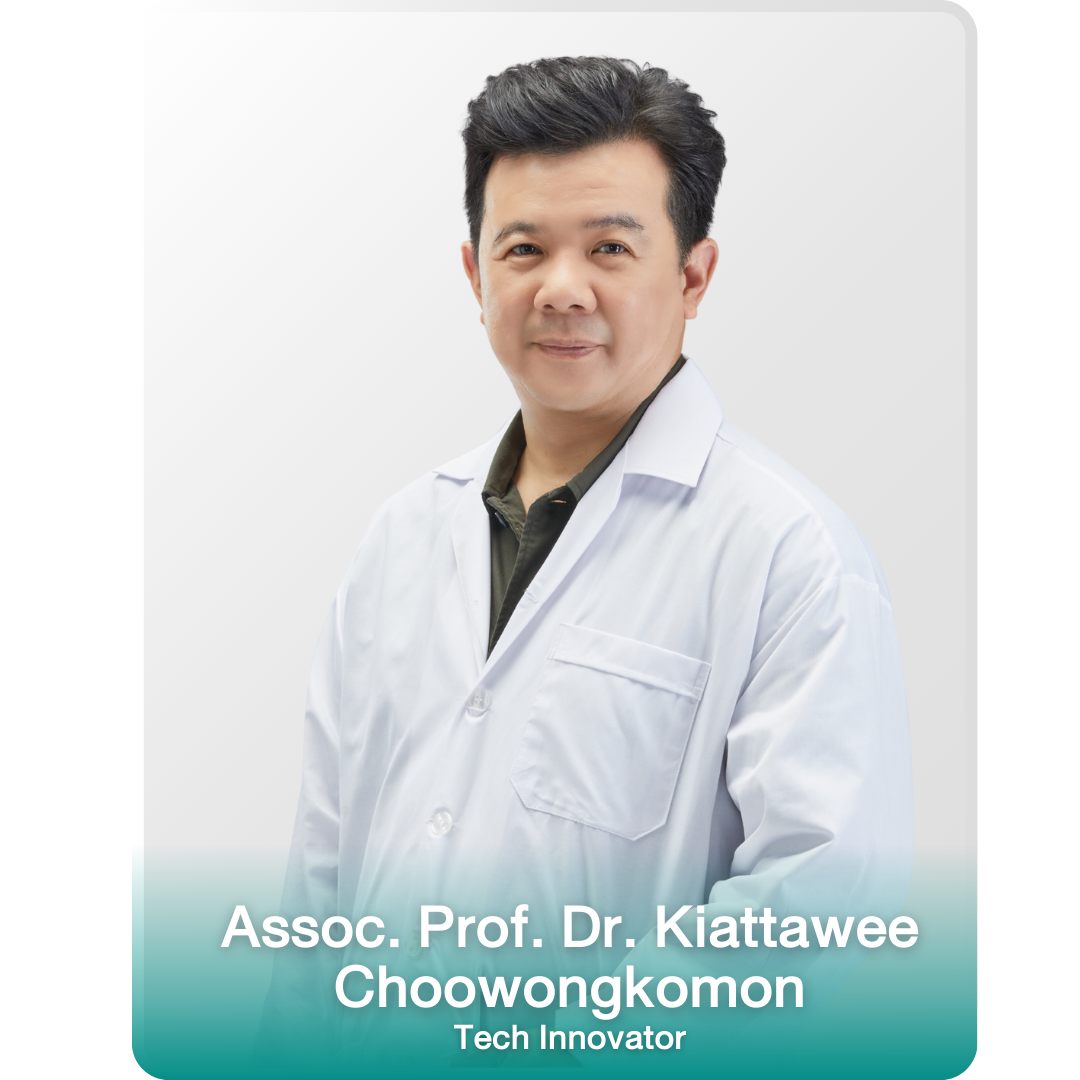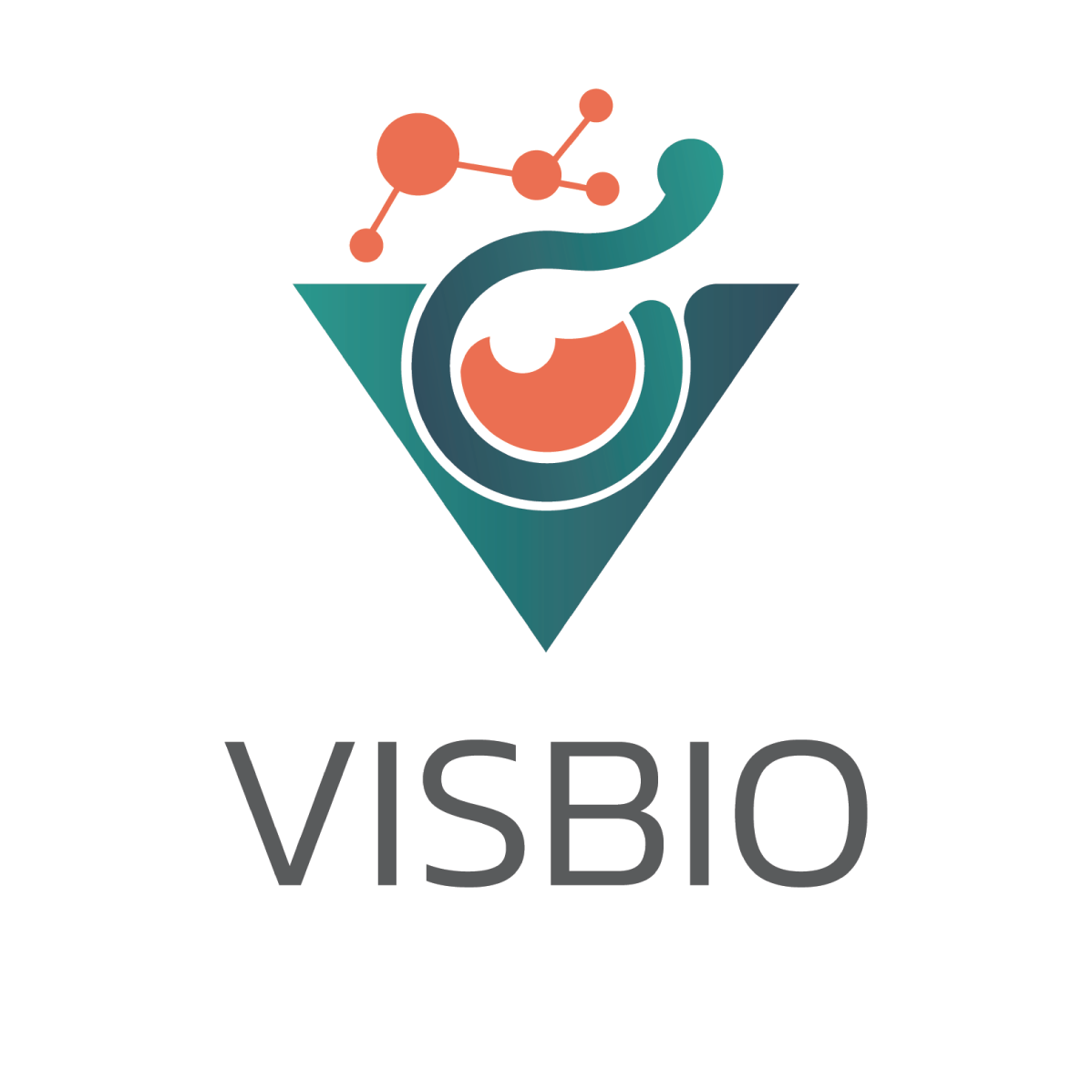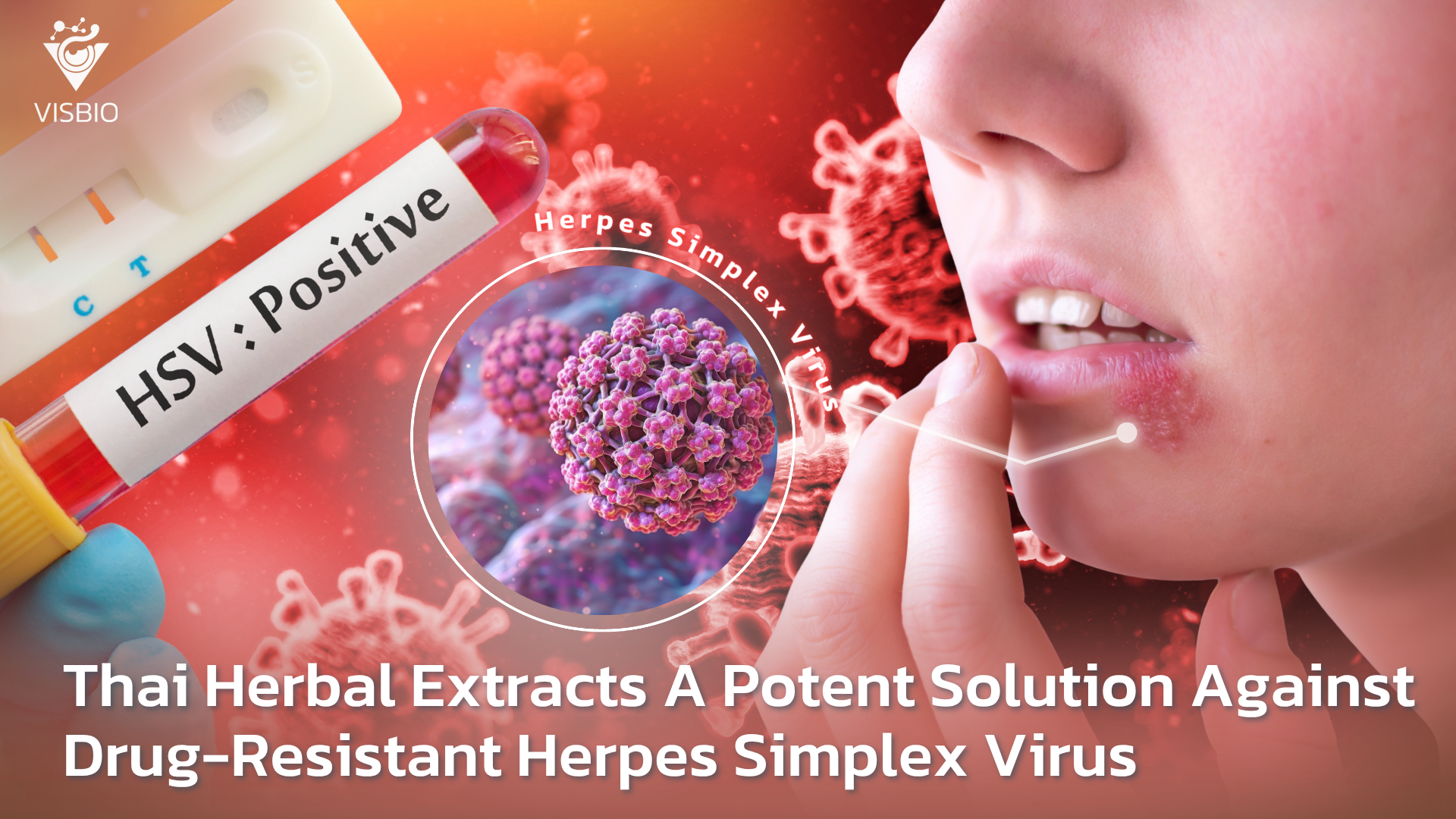Infection with the Herpes Simplex Virus (HSV) is a pervasive global health issue, causing a range of conditions from mild but recurrent cold sores and genital herpes to severe and life-threatening encephalitis. With billions of people infected worldwide, the virus establishes a latent, lifelong infection in nerve ganglia, leading to periodic reactivation. The standard-of-care treatment for HSV is the antiviral drug Acyclovir (ACV); however, its long-term and widespread use, particularly in immunocompromised patients, has led to the emergence of drug-resistant strains. This growing challenge has created an urgent need for new, effective, and safe therapeutic alternatives.
This article explores a groundbreaking study, co-authored by Associate Professor Dr. Kiattawee Choowongkomon, that delves into the potent antiviral properties of three commercial Thai herbal extracts: Kerra™, KS™, and Minoza™. This pioneering research provides a powerful validation of traditional medicine through modern scientific methods. It demonstrates that these natural extracts, particularly Kerra™ and KS™, not only inhibit the replication of standard Herpes Simplex Virus strains but are also remarkably effective against an ACV-resistant strain. The findings reveal a sophisticated, multi-pronged mechanism of action, opening a new frontier for the development of natural antiviral therapeutics and supplements.
The Challenge of Herpes Simplex Virus and the Rise of Drug Resistance
The Herpes Simplex Virus family is primarily divided into two types. HSV-1 is commonly associated with orolabial herpes (cold sores) and is typically transmitted via oral-to-oral contact. HSV-2 is the primary cause of genital herpes and is transmitted sexually. However, these distinctions have become blurred, with HSV-1 increasingly causing genital infections. After the initial infection of epithelial cells, the virus travels to peripheral neurons and establishes a latent (dormant) infection in nerve ganglia. This latency is the reason why there is no cure for herpes; the virus can remain hidden from the immune system and reactivate later in life, causing recurrent symptoms.
For immunocompromised individuals, such as transplant recipients or those with HIV, recurrent HSV infections can be more frequent, severe, and difficult to manage. The gold-standard treatment, Acyclovir (ACV), works by inhibiting the viral DNA polymerase, a key enzyme required for viral replication. While highly effective against standard or “wild-type” strains, the long-term use of ACV has created selective pressure, leading to the evolution of ACV-resistant HSV strains. These resistant viruses often have mutations in their DNA polymerase or thymidine kinase genes, rendering ACV ineffective.
Alternative drugs like foscarnet and cidofovir are available for these resistant cases, but they are associated with a higher risk of adverse effects, such as kidney toxicity. This creates a critical medical need and a significant market opportunity for new antiviral agents that are safe for long-term use and effective against these problematic resistant strains. Natural herbal products, with their complex mixtures of bioactive compounds, represent a rich and promising source for such new discoveries.
Investigating Three Promising Thai Herbal Extracts
The current study focused on three commercial Thai herbal products known for their traditional medicinal uses: Kerra™, KS™, and Minoza™. These products are complex mixtures of multiple medicinal plants, suggesting they contain a wide array of phytochemicals with potential biological activity. The primary goal of the research was to scientifically validate their efficacy against both wild-type and drug-resistant strains of the Herpes Simplex Virus and to elucidate their mechanism of action.
The study used a rigorous, multi-faceted approach:
- Virus Strains: The researchers tested the extracts against three distinct viral strains: HSV-1 KOS (a standard wild-type strain), HSV-2 (a clinical isolate), and HSV-1 dxpIII (a strain known to be resistant to drugs like foscarnet and, as shown in the study, also resistant to ACV).
- Plaque Formation Assays: The primary method for measuring antiviral activity was the plaque assay. In this test, a layer of host cells is infected with the virus. Each infectious virus particle creates a “plaque,” or a small area of dead cells. An effective antiviral agent will reduce the number of plaques formed.
- Mechanism of Action Studies: The team designed a series of experiments to pinpoint how and when the extracts were working during the viral lifecycle. This included testing the extracts at different stages, such as before the virus enters the cell (pre-entry) and after it has already established an infection (post-entry).
- Molecular Analysis: At a deeper level, the researchers used RT-qPCR and Western blotting to measure how the extracts affected the expression of key viral genes (like ICP4, UL30, gD, and gB) and host immune response genes (like IL1B, IL6, STAT3, and NFKB1).
- Phytochemical and Computational Analysis: Finally, they used advanced techniques like LC-MS/MS and molecular docking to identify the most abundant phytochemicals in the extracts and predict how they might interact with the viral DNA polymerase.
Potent Antiviral Efficacy Against Herpes Simplex Virus Including Resistant Strains
The results of the plaque formation assays were clear and compelling. When tested in a post-entry scenario (mimicking a real-world treatment where the infection has already begun), both Kerra™ and KS™ demonstrated powerful, dose-dependent inhibition of all three viral strains. At a concentration of 200 µg/mL, both extracts achieved 100% inhibition of the wild-type HSV-1 KOS and HSV-2.
The most significant and exciting finding, however, came from the experiments with the drug-resistant HSV-1 dxpIII strain. In these tests, the standard drug ACV was, as expected, unable to inhibit the virus. In stark contrast, all three herbal extracts significantly reduced plaque formation. KS™ was the most effective, achieving nearly 100% inhibition at concentrations of 100-200 µg/mL. Kerra™ was also highly effective, achieving 100% inhibition at 200 µg/mL. Even Minoza™, while less potent overall, still inhibited the resistant virus by over 80% at the highest concentration.
This demonstrates that Kerra™ and KS™ are not only potent antiviral agents but are also capable of overcoming the mechanisms of resistance that render conventional drugs useless. This positions them as exceptionally strong candidates for development into new therapeutic products.
A Multi-Pronged Mechanism of Action
The study went beyond simply demonstrating efficacy; it provided deep insights into the sophisticated, multi-pronged mechanism by which these extracts combat the Herpes Simplex Virus.
- Inhibition at Multiple Lifecycle Stages: The extracts were effective in both pre-entry and post-entry models. In the pre-entry step (where the virus was mixed with the extract before infecting the cells), Kerra™ and KS™ completely inhibited plaque formation at concentrations as low as 50-100 µg/mL. Further investigation showed that the extracts could interfere with viral penetration, viral attachment, and even prevent the release of new virions from infected cells. This multi-stage attack makes it much harder for the virus to evade the treatment.
- Direct Inhibition of Viral Gene Expression: The molecular analysis revealed that Kerra™ and KS™ directly suppress the machinery the virus uses to replicate. They significantly decreased the mRNA expression of key viral genes, including ICP4 (an immediate-early gene that acts as a master switch for viral replication), UL30 (an early gene that codes for the viral DNA polymerase), and gD (a late gene for a structural glycoprotein). They also reduced the protein levels of another key glycoprotein, gB. By shutting down the expression of these essential genes, the extracts effectively halt the viral production line.
- Modulation of the Host Immune Response: Perhaps most impressively, the extracts also appear to boost the host cell’s own antiviral defenses. Treatment with Kerra™ and KS™ led to the upregulation of several key immune signaling genes, including IL1B, IL6, STAT3, and NFKB1. These genes are part of the innate immune response and play a crucial role in controlling viral infections. This suggests a dual action: the extracts not only attack the virus directly but also empower the host cells to fight back more effectively.
Identifying the Bioactive Compounds Through In Silico Analysis
To identify the potential active compounds responsible for these effects, the researchers analyzed the phytochemical profiles of the extracts and performed molecular docking simulations. They identified several high-abundance compounds in each extract, such as 2-Methoxy-9H-xanthen-9-one in Kerra™, piperine in KS™, and sargassopenilline D in Minoza™.
When these compounds were virtually docked against the HSV-1 DNA polymerase (the target of ACV), the results were very promising. The compounds showed high binding energy, fitting into the active site in a manner closely resembling that of ACV. This computational evidence suggests that these specific phytochemicals may be directly contributing to the antiviral effect by inhibiting the same critical enzyme as the gold-standard drug, but through a structure that resistant viruses are still susceptible to.
Partnering with VISBIO to Commercialize a Natural Antiviral Solution
This research provides a powerful, scientifically-defensible foundation for creating a new generation of natural antiviral products. For companies in the pharmaceutical, nutraceutical, and consumer health sectors, the validation of Kerra™ and KS™ represents a direct gateway to innovation and market leadership. The opportunity lies in developing:
- Topical Treatments for Herpes Labialis: A cream or ointment based on these extracts could offer a natural and highly effective alternative to ACV for treating cold sores, with the significant advantage of being active against resistant strains.
- Oral Supplements for Immune Support: Given their ability to modulate the host immune response, these extracts could be formulated into daily supplements designed to reduce the frequency and severity of HSV reactivations.
- Preventative Products: The extracts’ activity in the pre-entry stage suggests potential for use in products like lip balms or oral rinses designed to offer a protective barrier.
VISBIO specializes in bridging the gap between groundbreaking academic discovery and market-ready products. We invite companies to partner with us to explore the vast commercialization opportunities this technology offers. Contact us today for a free consultation to learn how you can harness this cutting-edge research.

About the Author:
Associate Professor Dr. Kiattawee Choowongkomon is a leading expert in biochemistry and proteomics, specializing in the development of bioactive compounds for therapeutic applications. His research bridges traditional medicinal knowledge with modern scientific innovation, creating impactful health solutions.


